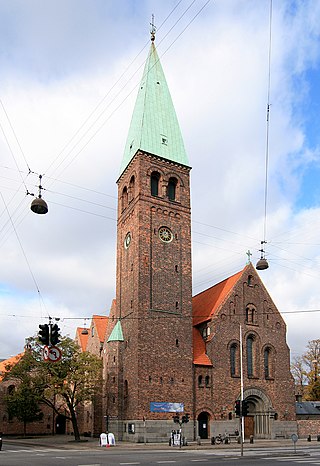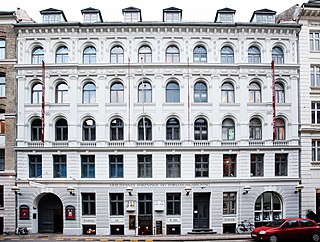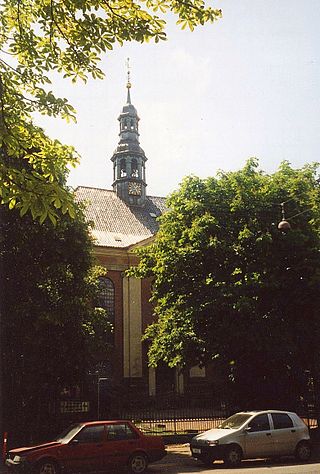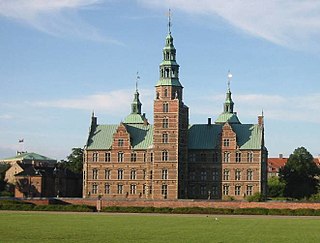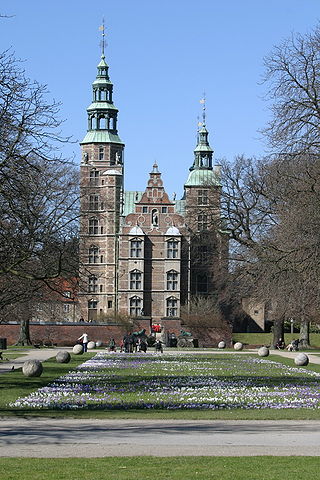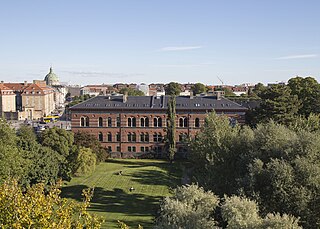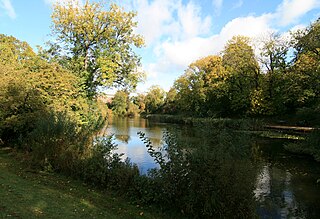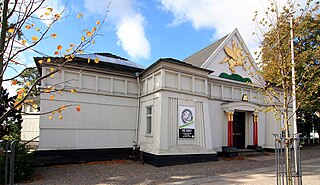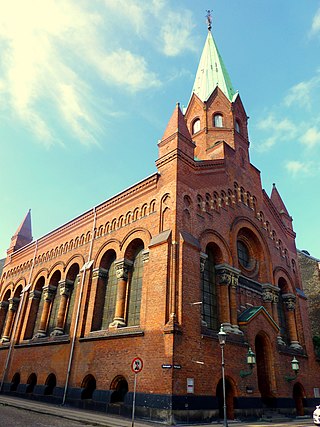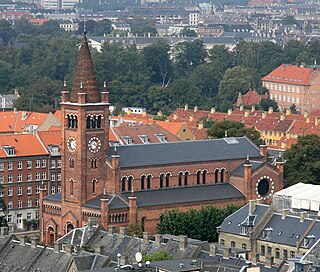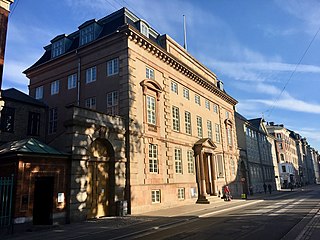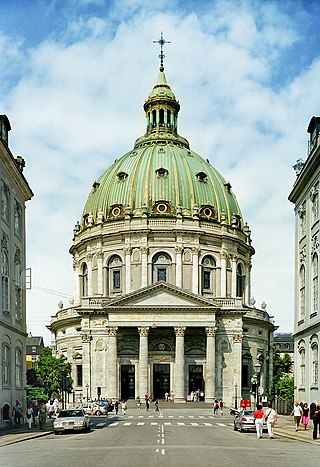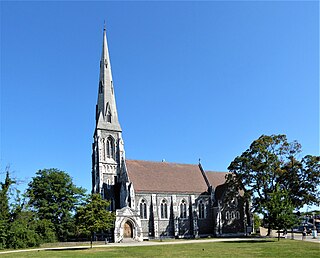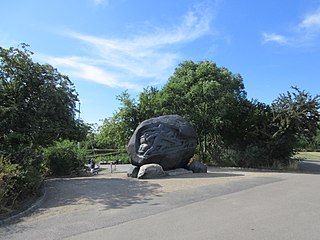Self-guided Sightseeing Tour #3 in Copenhagen, Denmark
Legend
Guided Free Walking Tours
Book free guided walking tours in Copenhagen.
Guided Sightseeing Tours
Book guided sightseeing tours and activities in Copenhagen.
Tour Facts
9.1 km
133 m
Experience Copenhagen in Denmark in a whole new way with our self-guided sightseeing tour. This site not only offers you practical information and insider tips, but also a rich variety of activities and sights you shouldn't miss. Whether you love art and culture, want to explore historical sites or simply want to experience the vibrant atmosphere of a lively city - you'll find everything you need for your personal adventure here.
Activities in CopenhagenIndividual Sights in CopenhagenSight 1: Sankt Andreas Kirke
St. Andrew's Church is a Lutheran church on Gothersgade in Copenhagen, Denmark, which was designed by the architect Martin Borch and built from 1897 to 1901. It is a parish church within the Danish National Church.
Sight 2: Københavns Indre Mission
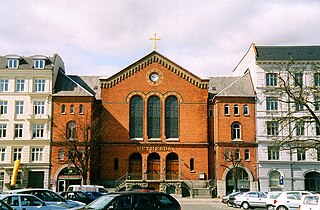
The Bethesda Mission House, Rømersgade 17 next to Israels Plads, is a mission house and bookstore in Copenhagen named after Bethesda Dam in Jerusalem. The building was built in 1881-82 and inaugurated on 26 September 1882 by the Copenhagen Inner Mission for DKK 266,620 (1906 kroner) with land and furnishings according to a design by Ludvig Knudsen. The decoration of the house was made by Johan N. Schrøder.
Sight 3: Worker's Museum
The Workers Museum is a historical museum in central Copenhagen, Denmark.
Sight 4: Den Tyske Reformerte Kirke
Reformed Church in Gothersgade, opposite Rosenborg Castle, is a church building used by the reformed congregations in Copenhagen, Denmark. Consecrated in 1689, the church was instigated by Queen Charlotte Amalie, consort of King Christian V, who was herself a German Calvinist. The church is noted for its fine Baroque interiors which date from 1730 when it was restored after being damaged in the Copenhagen Fire of 1728.
Sight 5: King's Garden
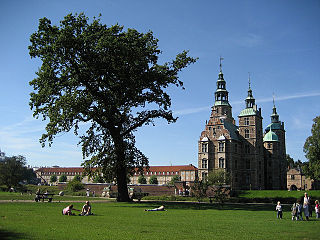
Rosenborg Castle Gardens is the oldest and most visited park in central Copenhagen, Denmark. Established in the early 17th century as the private gardens of King Christian IV's Rosenborg Castle, the park also contains several other historical buildings, including Rosenborg Barracks, home to the Royal Guards, as well as a high number of statues and monuments. The park also holds art exhibitions and other events such as concerts in the summer.
Sight 6: Rosenborg Castle
Rosenborg Castle is a renaissance castle located in Copenhagen, Denmark. The castle was originally built as a country summerhouse in 1606 and is an example of Christian IV's many architectural projects. It was built in the Dutch Renaissance style, typical of Danish buildings during this period, and has been expanded several times, finally evolving into its present condition by the year 1624. Architects Bertel Lange and Hans van Steenwinckel the Younger are associated with the structural planning of the castle.
Wikipedia: Rosenborg Castle (EN), Website, Facebook, Instagram
Sight 7: Kongernes Samling Rosenborg
The collection of the kings, formerly the chronological collection of the Danish kings, is a museum collection associated with the royal house, whose purpose is to tell Danish history elucidated from the kings. The museum has three departments, Rosenborg Castle, the Amalienborg Museum and Koldinghus. The establishment was done by Royal Resolution of May 4, 1833, where a Commission was set up "to a Chronological Scheme and the Set up of the Art Cases, etc., which were stored at Rosenborg Castle". Five years later you could open the door to the audience at Rosenborg. The museum decisively broke with contemporary exhibition principles. A number of interiors were created in chronological order, where the individual spaces told about the individual king and his contemporaries. The starting point was Rosenborg's builder, Christian 4. Since then, space was added to Christian 8., Frederik 7 and Christian 9. in 1994. Since January 1, 2021, Koldinghus has also been a branch of the Kings Collection.
Sight 8: Danish Natural History Museum
The Natural History Museum of Denmark is a natural history museum located in Copenhagen, Denmark. It is affiliated with the University of Copenhagen
Sight 9: Østervold
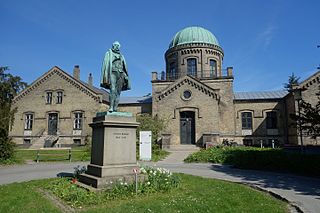
Østervold Observatory is a former astronomical observatory in Copenhagen, Denmark owned and operated by the University of Copenhagen. It opened in 1861 as a replacement for the university's old observatory at Rundetårn.
Sight 10: Botanical Garden
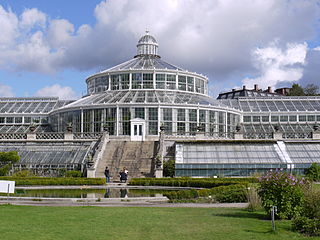
The University of Copenhagen Botanical Garden, usually referred to simply as Copenhagen Botanical Garden, is a botanical garden located in the centre of Copenhagen, Denmark. It covers an area of 10 hectares and is particularly noted for its extensive complex of historical glasshouses dating from 1874.
Sight 11: Østre Anlæg
Østre Anlæg is a public park in Copenhagen. Once it was a part of the old city fortifications. The park was designed by landscape architect H.A. Flindt who also designed Ørstedsparken and Copenhagen Botanical Garden on the old fortification. The park lies between The National Art Museum at the southern end, and Oslo Plads and Østerport Station at the northern end. There are three lakes in this park, they used to be part of the moat system.
Sight 12: Den Frie Udstilling
Den Frie Udstilling is a Danish artists' association, founded in 1891 by artists in protest against the admission requirements for the Kunsthal Charlottenborg. Modeled on the Salon des Refusés, it is Denmark's oldest association of artists. Now located on Copenhagen's Oslo Plads next to Østerport Station, it works as an arts centre, continuing to exhibit works created and selected by contemporary artists rather than those chosen by cultural authorities.
Sight 13: Eidsvoll Plads
Eidsvoll Plads is a square in the inner city of Copenhagen. The square was named on 17 May 2014 on the occasion of the 200th anniversary of Norway's constitution, which was adopted at Eidsvoll on 17 May 1814.
Sight 14: Jerusalem Church
Jerusalem's Church is the main church of the Methodist community in Denmark. The church building is located in Rigensgade, central Copenhagen. The church was founded by missionaries in 1859, while the current building was opened in 1915.
Sight 15: Saint Paul's Church
St. Paul's Church is a Lutheran church in central Copenhagen, Denmark, also colloquially known as Nyboder's Church due to its location in the middle of the Nyboder area. It was designed by Johannes Emil Gnudtzmann and constructed from 1872 to 1877.
Sight 16: Medical Museion
Medical Museion is a museum and research unit in Copenhagen, Denmark, dedicated to the history of health and disease in a cultural perspective. Part of the Faculty of Health and Medical Sciences at University of Copenhagen, its principal area of interest is the recent history of the material and iconographic culture of biomedicine. It is based in a listed building from 1787 on Bredgade in Frederiksstaden.
Sight 17: Amaliehaven
Amaliehaven is a small park located between Amalienborg Palace and the waterfront in the Frederiksstaden neighbourhood of central Copenhagen, Denmark. It was established in 1983 as a gift from the A.P. Møller and the Chastine McKinney Møller Foundation. The park is part of the so-called Frederiksgade axis, the shorter but more distinctive of the two axes on which Frederiksstaden is centred.
Sight 18: Amalienborg
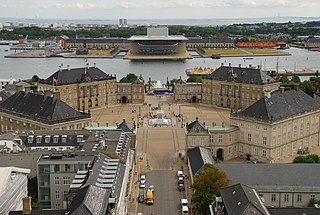
Amalienborg is the official residence for the Danish royal family and is located in Copenhagen. Frederick VIII's palace complex has four identical Classical façades, effectively four palaces, with Rococo interiors, laid around an octagonal courtyard. At the centre is a large equestrian statue of Frederick V. Amalienborg was originally built for four noble families, but after Christiansborg Palace burned in 1794 the royal family bought the palaces and moved in. Over the years various monarchs and their families have lived there, including today's King Frederik X and Queen Mary.
Sight 19: Alexander Nevsky Church
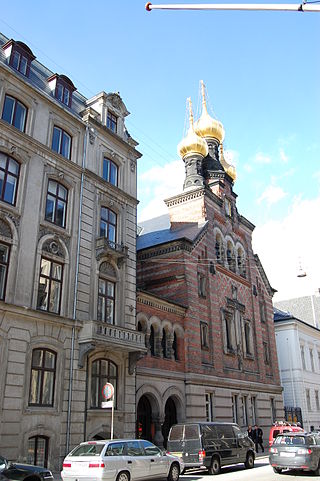
The Alexander Nevsky Church is the only Russian Orthodox church in Copenhagen. It was built by the Russian Government between 1881 and 1883, prompted by Princess Dagmar of Denmark's marriage to Alexander Alexandrovich on 9 November 1866 and their later ascent to the Russian throne as Tsar Alexander III of Russia and Tsaritsa Maria Feodorovna. The church is dedicated to the Russian patron saint Alexander Nevsky.
Sight 20: Marble Church
Join Free Tour*Frederik's Church, popularly known as The Marble Church for its rococo architecture, is an Evangelical Lutheran church in Copenhagen, Denmark. The church forms the focal point of the Frederiksstaden district; it is located due west of Amalienborg Palace.
Sight 21: St. Ansgar's Cathedral
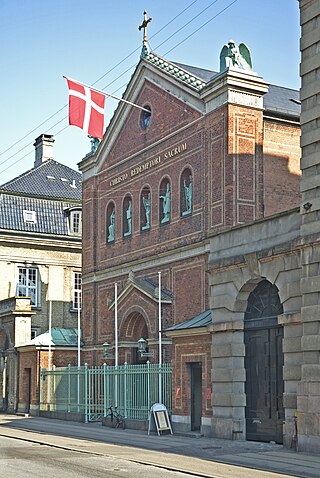
Saint Ansgar's Cathedral in Copenhagen, Denmark is the principal church of the Roman Catholic Diocese of Copenhagen, which encompasses all of Denmark, including the Faroe Islands and Greenland. It was consecrated in 1842 and became a cathedral in 1941.
Sight 22: Frihedsmuseet
The Museum of Danish Resistance is located in Churchill Park in Copenhagen, close to Amalienborg, the Citadel and Langelinie. The museum's official name is "The Museum of Denmark's Freedom Struggle 1940-1945" and in English "The Museum of Danish Resistance during World War II".
Sight 23: Gefion Fountain

The Gefion Fountain is a large fountain on the harbour front in Copenhagen, Denmark. It features a large-scale group of oxen pulling a plow and being driven by the Norse goddess Gefjon. It is located in Nordre Toldbod area next to Kastellet and immediately south of Langelinie.
Sight 24: St Alban's Anglican Church
St. Alban's Church, locally often referred to simply as the English Church, is an Anglican church in Copenhagen, Denmark. It was built from 1885 to 1887 for the benefit of the growing English congregation in the city. Designed by Arthur Blomfield as a traditional English parish church in the Gothic Revival style, it is in a peaceful park setting at the end of Amaliegade in the northern part of the city centre, next to the citadel Kastellet and the Gefion Fountain and Langelinie.
Sight 25: Churchillparken
Churchillparken is a public park in Copenhagen, Denmark, occupying a tract of land between Kastellet, a 17th-century fortress, and the street Esplanaden. Located on the former esplanade which used to surround Kastellet, the area has a long history as a greenspace but received its current name in 1965 to commemorate Winston Churchill and the British assistance in the liberation of Denmark during World War II.
Sight 26: Kastellet
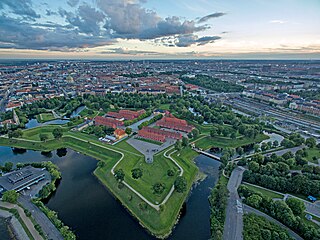
Kastellet is a citadel located in Copenhagen, Denmark. It is one of the best preserved fortresses in Northern Europe. It is constructed in the form of a pentagon with bastions at its corners. Kastellet was continuous with the ring of bastioned ramparts which used to encircle Copenhagen but of which only the ramparts of Christianshavn remain today.
Sight 27: Kastelskirken
The Citadel Church is located in the Kastellet in Copenhagen, the capital of Denmark. The church was originally reserved for the garrison of the castle, but in 1902 also incorporated a civil parish. The Citadel Church celebrated its 300th anniversary in 2004.
Sight 28: Kastelsmøllen
The Kastelsmøllen in Copenhagen, built in 1847, is a Dutch windmill with a gallery. It consists of a brick-built sub-mill and an octagonal upper mill in wood clad with shavings. The wings have a stern for sails, and the mill is manually yaw with yaw beams and tail. The hat is bulbous and thatched with shavings. The mill was built as a grain mill and was in operation until 1903. The mill is functional and in operation a few times a year, and it celebrates the Citadel's birthday every year on 28 October.
Sight 29: Danmark-Ekspeditionen
The Denmark Expedition Memorial is a sculpted boulder at Langelinie in Copenhagen, Denmark, commemorating Ludvig Mylius-Erichsen (1872–1907), Niels Peter Høeg Hagen (1877–1907) and Jørgen Brønlund (1877–1907) who died on the Denmark Expedition to North-East Greenland in 1907. The memorial was unveiled in 1912. It was designed by Kai Nielsen in collaboration with Kaare Klint.
Share
Disclaimer Please be aware of your surroundings and do not enter private property. We are not liable for any damages that occur during the tours.
GPX-Download For navigation apps and GPS devices you can download the tour as a GPX file.
